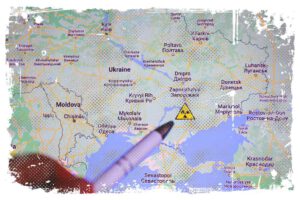The political system of the Republic of Poland underwent a transformation after the collapse of communism in 1989. The country adopted a democratic system with a market economy, and work began on a new constitution. In October 1992, the so-called „small constitution” was adopted, which defined the relationship between the legislative and executive powers. On April 2, 1997, the Basic Law of the Republic of Poland was adopted, which is still in force. According to its provisions, Poland is a parliamentary republic.

You may also want to read: How Poland Became Communist After WWII?
The foundations of the democratic Polish political system include the rule of law, the sovereignty of the nation, political pluralism, the separation of powers and the right to vote. The legislative power is exercised by the Parliament, consisting of the Sejm and the Senate, the executive power by the Council of Ministers and the President of the Republic of Poland, and the judicial power by courts and tribunals, such as the Supreme Court, the Constitutional Tribunal and the State Tribunal.
The Basics – Sejm and Senate in Poland
The Sejm of the Republic of Poland is composed of 460 deputies elected for 4 years by universal, direct, equal, proportional and secret voting. The President of the Republic of Poland decides to hold parliamentary elections no later than 90 days before the end of the term of office. The Sejm works in plenary sessions and in sessions of parliamentary committees.
↳ PRO TIP: Do you like traveling? Then before you buy any ticket or book an attraction, check if it's available in this worldwide Viator Database. You may save a lot of money and time. No need to thank me :)
The Sejm has internal structures with specific functions, such as the Marshal of the Sejm, the Presidium of the Sejm, parliamentary committees and the Council of the Elders. The three main functions of the Sejm are legislative, creative and supervisory. The Senate, the second chamber of the Parliament, consists of 100 senators, who are also elected for a 4-year term. The Senate has the right of legislative initiative.
Democratic Executive Power – The President and the Council of Ministers
Executive power lies with the President of the Republic of Poland and the Council of Ministers. The president, elected for a 5-year term through universal, equal, secret, and direct elections, has competencies such as setting the date of parliamentary elections, legislative initiative, appointing the Prime Minister, and representing the state internationally. The Council of Ministers, or government, headed by the prime minister, includes deputy prime ministers, ministers, and chairmen of committees.
The Council of Ministers’ responsibilities include managing domestic, foreign, and administrative policies, drafting the budget, supervising local governments, fulfilling laws, and ensuring national security.
Courts and Tribunals – Upholding Judicial Power

In Poland, judicial power is exercised by courts and tribunals. The Supreme Court, the highest judicial authority, oversees the jurisprudence of common and special courts. The Constitutional Tribunal determines the constitutionality of statutes, legal provisions, and agreements. The State Tribunal, another crucial judicial body, judges individuals in important state positions who have violated the Constitution, such as the president.
The Truth – Rise of Populism and New Autocrats in Poland
Social polarization and manipulation of the information space are key elements that enable populists and new autocrats to maintain power. We’ve seen this in Poland, Hungary, Turkey, and Russia. With these tools, autocrats can rely on social popularity, tolerance for breaking democratic rules, and voter mobilization for years, as long as they manage to keep the system balanced.
Recent studies, such as the „Backsliding report: Democratic Regress in the Contemporary World” by American political economists Stephan Haggard and Robert Kaufman, and the theory of „information autocracies” by Sergei Guriev and Daniel Treisman, help us understand the situation in countries like Poland.
A Faster Decline Than in Hungary
Haggard and Kaufman compared the state of democracy in several countries worldwide. Based on international monitoring, they measured civil liberties, independence of supreme courts, electoral process integrity, state control of the media, and social polarization. It’s no surprise that in Poland between 2015 and 2020, all these indicators decreased. Moreover, Poland’s situation deteriorated more than in the United States under Donald Trump, Hungary, Ukraine, or even Russia. The researchers emphasize that Poland is quickly becoming similar to Hungary under Viktor Orbán’s rule.
The erosion of democracy indicators in Poland during 2015–2019 showed significant declines:
- Independence of the Supreme Court: a decrease of 1.16 points
- Media independence: a decrease of 1.82 points
- Level of civil liberties: a decrease of 1.22 points
- Integrity of the electoral system: a decrease of 1.3 points
Poland’s results are worse than Hungary’s and dangerously close to Russia’s levels. Among the sixteen countries surveyed, Poland ranked fourth in the highest regression of key elements of the democratic system.
Social Polarization and Its Effects in Poland
Poland has one of the most polarized societies in the European Union. Unfortunately, politicians continue to fuel these divisions. Examples include the recent tightening of abortion laws by the current Constitutional Tribunal and the exploitation of LGBT issues by right-wing parties during election campaigns.
Political commitment to deepening polarization can benefit autocrats in several ways. It fosters the growth of their popularity and provides greater social tolerance for deviations from democratic rules. When voters view party competitors as real enemies, they are more likely to accept ruthless actions against them. In a state of constant „war,” people may be more willing to put democracy aside temporarily to defeat perceived enemies and claim victory.
Polarization affects all sides of the dispute, leading to radicalization and growing tolerance for anti-democratic actions across the political spectrum. Restoring democracy in a polarized society requires significant effort, as people need to redefine the boundaries of acceptable behavior and re-establish the values of true democracy.
Autocrats often use war rhetoric to normalize abuses and justify breaking democratic rules, supposedly to protect the country from destruction. They violate the independence of courts, destroy state control mechanisms, weaken the opposition, and try to control the information space. Information control in modern „information autocracies” is often achieved through economic pressure rather than overt repression.
In these systems, autocrats manipulate information and use propaganda to artificially increase their popularity and create the illusion of competence. They silence well-informed individuals who could expose their incompetence, allowing them to maintain power and control despite their lack of genuine democratic mandate.
Educated Society is Evil
The strategy of dividing society into the „evil elite” and the „sovereign” majority serves the interests of autocrats in several ways. By maintaining this critical tension, they can manipulate public opinion and protect their power.
- Weakening the elite: Autocrats attempt to weaken the elite by offering personal benefits to those who are willing to support their regime. This strategy creates divisions within the elite group and reduces their overall influence.
- Distorting the message: Autocrats manipulate the message coming from the elite, ensuring that it reaches the majority in a distorted form that benefits their rule. By controlling the narrative, they can shape public opinion in their favor.
- Undermining credibility: Autocrats undermine the credibility of intellectual authorities who oppose them, painting them as self-serving and out of touch with the needs of the majority. This strategy weakens the influence of the elite and ensures that their criticisms are not taken seriously by the wider public.
In Poland, the ruling party (PiS) has frequently attacked educated elites, aiming to protect their power by preventing the elite from gaining the attention of the majority. By maintaining a constant state of tension between the elite and the „sovereign,” the ruling party can more easily manipulate public opinion and maintain its grip on power. This strategy is consistent with the model of informational autocracy, which prioritizes the control of information and the narrative to secure political power.
Media Control is a Key to Rulers’ Popularity in Poland
We all know the second crucial element that enables information autocracy to function effectively is media control. And it’s evident in Poland, where everything aligns with the described model. Initially, the ruling party transformed public media into a propaganda tool and ensured smooth operations for private media friendly to the government (for instance, through advertising revenues from state-owned companies).
However, during the second term of the PiS government, amid the crisis caused by the pandemic, this system proved insufficient. Law and Justice (PiS) felt they were losing control over the message. Consequently, state-owned Orlen acquired regional media from the German concern Polska Press, intending to help the rulers maintain their popularity among the public. I must admit, it’s not about the type of popularity enjoyed by football player Robert Lewandowski. It’s simply enough to keep them in power.
Information autocracy hinges on two variables: the size of the informed group (relative to the general public) and the rulers’ influence on the media (to control the message reaching the majority).
I believe that the elite group is usually large enough that resorting to brutal repression against them (as in classic dictatorships from decades ago) would be counterproductive, as it would weaken the authorities’ image. They want to present themselves as competent, not brutal. However, this group is also too small to challenge the state’s dominance in the information space, as is the case in Poland.
Democratization and Autocrats’ Resistance
I think that in countries operating under this model, real democratization can occur when the group of educated and informed people expands or when electoral demobilization occurs among the general population. Autocrats will do everything in their power to prevent this from happening. Universities and media are the thorns in the rulers’ side today. From this perspective, it’s easy to understand the controversial nomination of Przemysław Czarnek for the position of Minister of Education and Science, the strengthening of state propaganda, and attempts to weaken the key independent media (whose message reaches a large number of citizens, which may upset the balance).
I am convinced that PiS will not back down in any of these areas – because they can’t. It’s a matter of survival, a question of the party’s existence. Since PiS wants to govern, they will continue to push the unstable system and hope that the situation stabilizes.
References:
- https://pl.wikipedia.org/wiki/Pa%C5%84stwo_autorytarne
- https://pl.wikipedia.org/wiki/Ustr%C3%B3j_polityczny_Polski
- https://businessinsider.com.pl/trojpodzial-wladzy-w-polsce-wyjasniamy-na-czym-polega/qtg5y6p



